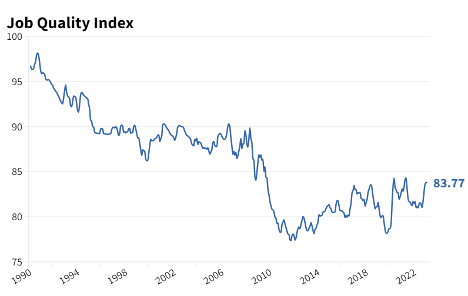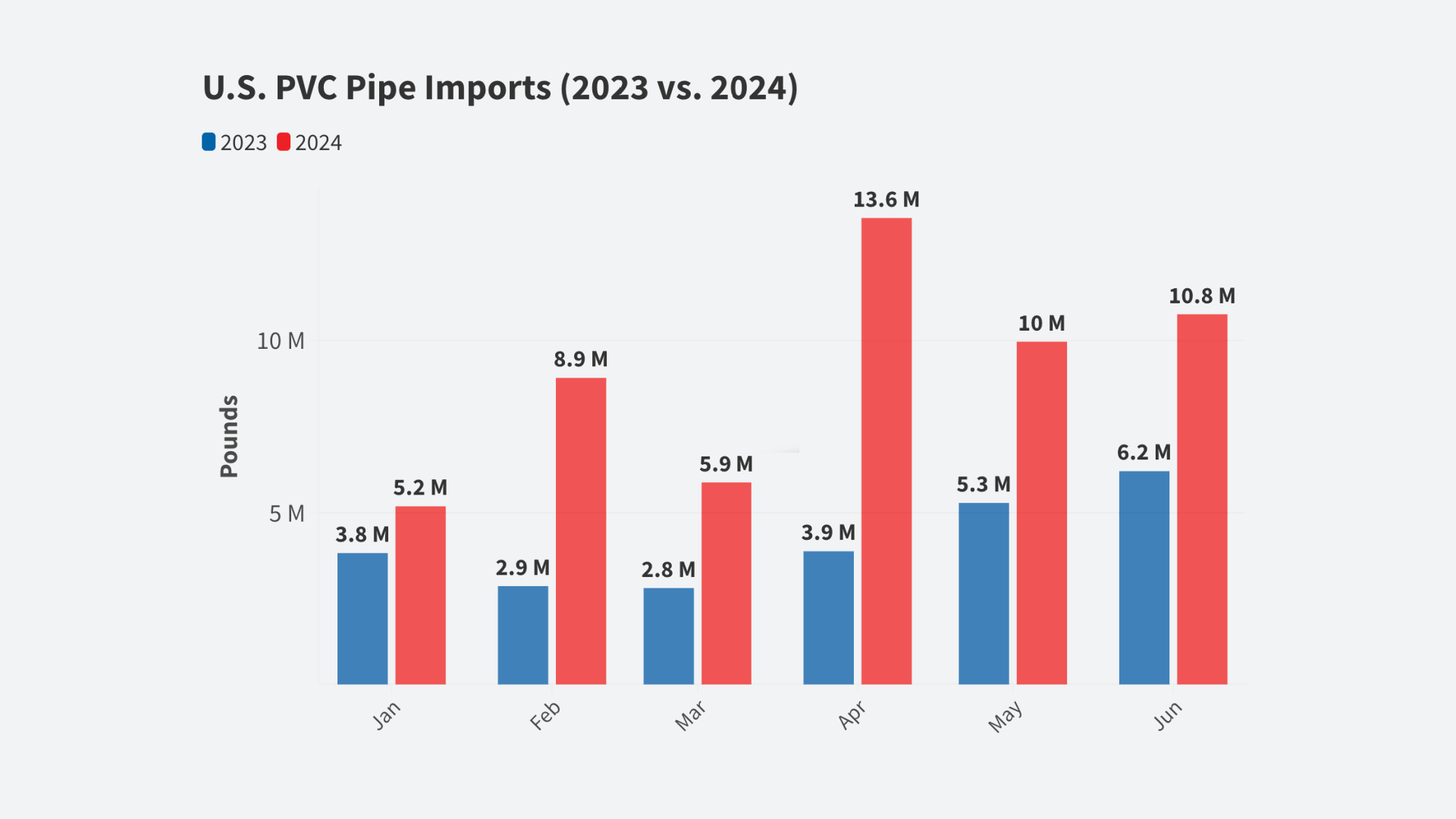WASHINGTON — The Coalition for a Prosperous America (CPA) today announced that the U.S. Private Sector Job Quality Index (JQI) for March was 83.77, nearly unchanged from February, down 0.07%. In recent months, the index increased showing that high-quality jobs were growing slightly faster relative to low-quality jobs in the economy. The most recent data suggests that high-quality growth has plateaued.
Recent gains in high-quality job growth were offset in March. The largest job growth by sector was in accommodations and food services, which added 41,000 low-quality jobs. Accommodations and food services jobs pay the lowest weekly wage of all major sector at an average of $455 per week. Health care and social assistance added 31,900 jobs, but about two-thirds of the jobs added in the sector were low-quality jobs.
The average weekly wage for production and nonsupervisory workers in March was $966.34, down 0.01% from the previous month. Wage growth has remained flat over the past several months and remains below the rate of inflation. Over the past year, the average weekly wage has increased $40, up 4.3%. Although the rate of inflation is slowing, upward consumer price pressures remain significant at 5.0%. This means that production and nonsupervisory workers continue to lose purchasing power as their wage growth is lower than the increase in consumer prices.
The Bureau of Labor Statistics reported overall job gains of 253,000 in April and an unemployment rate of 3.4%, but February and March job gains were revised downward by a combined 149,000 jobs. The economy continues to add jobs but at a gradually slower pace and increasingly more concentrated in the service sector. Goods-producing industries, such as construction and manufacturing, saw a slight increase in employment in April that reversed a decline in March. Yet, the share of jobs created in goods-producing industries is about half of what it was a year ago and accounts for just 14% of private-sector jobs added in April, compared to 29% a year ago. Sectors that create high-paying jobs are contributing to a smaller share of overall job growth.
The Job Quality Index measures job quality for U.S. production and non-supervisory workers by comparing workers’ weekly wages to the mean weekly wage for all non-supervisory workers. Those jobs above the mean are classified as high-quality and those below the mean are low-quality. The index is calculated by dividing the number of high-quality jobs by low-quality jobs. An index of 100 means the number of high-quality production and nonsupervisory jobs is equal to the number of low-quality jobs. An index below 100 means that the economy includes more low-quality than high-quality jobs.
Over the past three decades, the JQI declined because the U.S. economy created more low-quality jobs than it has high-quality jobs. As shown in Figure 1, the JQI is down 13.4% from 1990 illustrating the disproportionate growth in low-wage, low-hour jobs.
Figure 1. Job Quality Index 1990-2023














